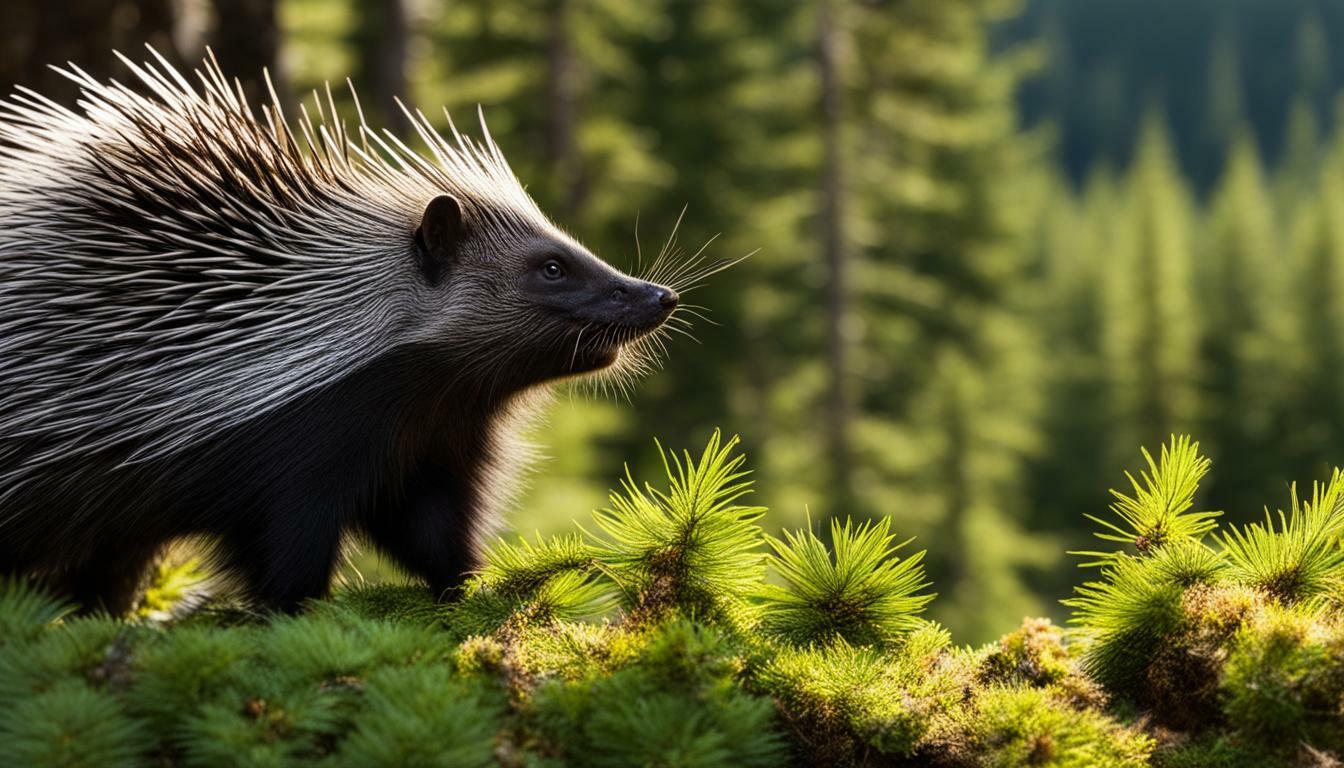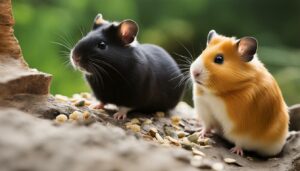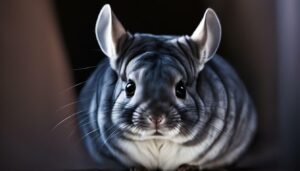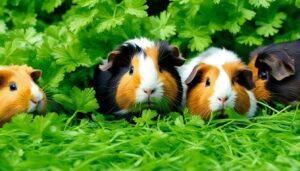Washington State is home to a diverse range of wildlife, and among its native species is the intriguing porcupine. These fascinating creatures can be found in various parts of the state, primarily in forested areas but also in brushy wetlands and riparian zones. They are one of the largest rodents in North America, weighing between 15 to 27 pounds and measuring 25-31 inches long. Porcupines possess a coat of more than 30,000 quills that serve as their primary defense mechanism.
Porcupines are primarily nocturnal animals, relying on their quills and strong odor to protect themselves from potential threats. Fishers, wolverines, coyotes, and cougars are among the natural predators that pose a challenge to porcupine populations in Washington State. Human activity, such as considering them as pests, also contributes to the threats they face.
As herbivores, porcupines feed on plants, fruit, leaves, and the inner bark of trees. They are solitary creatures, except during the breeding season in the fall when they come together. Unlike some other animals, porcupines do not hibernate or migrate and can be found throughout the state, particularly in forested areas and brushy wetlands.
To prevent conflicts between porcupines and humans, it is important to take measures such as removing artificial food sources, securing garbage cans, and fencing off gardens and vulnerable crops. By implementing these strategies, we can peacefully coexist with these remarkable creatures and help ensure their continued existence in Washington State.
Key Takeaways:
- Porcupines are native to Washington State and can be found in forested areas, brushy wetlands, and riparian zones.
- They are one of the largest rodents in North America, weighing between 15 to 27 pounds and measuring 25-31 inches long.
- Porcupines rely on their quills and strong odor for defense and protection against predators.
- Predators of porcupines in Washington State include fishers, wolverines, coyotes, and cougars, in addition to human activity.
- Porcupines are herbivores, feeding on plants, fruit, leaves, and the inner bark of trees.
The Nature of Porcupines
Porcupines, specifically the North American variety, are intriguing creatures known for their unique set of adaptations. With their unmistakable appearance and defensive quills, they have earned a reputation as one of the most recognizable rodents in North America.
Weighing between 15 to 27 pounds and measuring 25-31 inches long, porcupines are considered one of the largest rodents on the continent. Their size, combined with a coat of more than 30,000 quills, makes them an impressive sight in the wild.
Primarily nocturnal, porcupines rely on their quills and strong odor to defend themselves from threats. They are herbivores, with a diet consisting of plants, fruit, leaves, and the inner bark of trees. This dietary preference often leads them to forested areas, brushy wetlands, and riparian zones, where they can find ample food sources.
Despite regular encounters with predators like fishers, wolverines, coyotes, and cougars, porcupines have managed to establish a presence throughout Washington State. Their solitary nature and excellent climbing skills allow them to navigate their chosen habitats with ease, ensuring their survival in diverse environments.
| Porcupine Facts | |
|---|---|
| Weight | 15-27 pounds |
| Length | 25-31 inches |
| Quills | Over 30,000 |
| Diet | Plants, fruit, leaves, inner bark |
| Habitat | Forested areas, brushy wetlands, riparian zones |
Porcupine Habitat in Washington State
Porcupines in Washington State have shown a remarkable ability to adapt to various ecosystems, favoring forested areas, brushy wetlands, and riparian zones. These diverse habitats provide the necessary resources for porcupines to fulfill their dietary needs and establish their homes.
In forested areas, porcupines make use of the dense vegetation and abundant trees, which offer both shelter and a readily available food source. They are known to feed on a variety of plants, including leaves, twigs, buds, and the inner bark of trees. Their strong teeth and powerful jaws enable them to gnaw on tree bark, allowing them to access the nutrient-rich cambium layer.
In addition to forests, porcupines can also thrive in brushy wetlands and riparian zones. These areas provide a mix of shrubs, grasses, and water sources, creating an ideal environment for porcupines to forage and find protection. The proximity to water is particularly beneficial, as it allows porcupines to quench their thirst and maintain their hydration levels.
| Porcupine Habitat Preferences: | Example Locations |
|---|---|
| Forested Areas | Olympic National Forest, Gifford Pinchot National Forest |
| Brushy Wetlands | Skagit Wildlife Area, Grays Harbor National Wildlife Refuge |
| Riparian Zones | Yakima River Canyon, Nisqually River |
Overall, porcupines are well-suited to the diverse landscapes found in Washington State. Their ability to adapt to different habitat types underscores their resilience and importance within the region’s ecosystem.
Populations and Conservation
Understanding the porcupine population in Washington State is crucial for effective conservation efforts aimed at preserving these unique creatures. Porcupines are found primarily in forested areas, but they can also thrive in brushy wetlands and riparian zones. They are one of the largest rodents in North America, weighing between 15 to 27 pounds and measuring 25-31 inches long. These fascinating mammals are equipped with a coat of more than 30,000 quills, which serve as their primary defense mechanism against predators.
However, porcupines in Washington State face threats from both natural predators and human activity. Predators such as fishers, wolverines, coyotes, and cougars play a significant role in controlling the porcupine population. Additionally, human conflicts arise when these animals are considered pests or when their presence leads to damage to property or crops.
To mitigate these conflicts and ensure the long-term survival of porcupines in Washington State, conservation efforts are essential. These efforts include measures to protect porcupine habitats and educate the public about coexisting with these animals. Preventive measures, such as removing artificial food sources and securing garbage cans, can minimize the instances of porcupines coming into conflict with humans.
| Conservation Measures | Description |
|---|---|
| Removing artificial food sources | By eliminating attractants like bird feeders or unsecured pet food, the likelihood of porcupines encroaching on human properties can be reduced. |
| Securing garbage cans | Ensuring that garbage cans are properly sealed can prevent porcupines from accessing food waste, reducing the chances of human-porcupine conflicts. |
| Enclosures for compost piles | Using enclosures or secure fencing for compost piles can prevent porcupines from being attracted to the potential food source while also maintaining composting practices. |
| Fencing off gardens and vulnerable crops | Installing protective fencing around gardens and vulnerable crops can help prevent porcupines from causing damage and allows both porcupines and humans to coexist peacefully. |
By implementing these conservation measures and raising awareness about the importance of preserving porcupine populations, Washington State can ensure the continued existence of these remarkable creatures within its diverse ecosystems. Maintaining a harmonious balance between humans and wildlife is crucial for the long-term sustainability of both.
Fascinating Porcupine Facts
Delving deeper into the world of porcupines reveals a plethora of fascinating facts about their habits, diet, and reproductive patterns in Washington State. These unique creatures are one of the largest rodents in North America, weighing between 15 to 27 pounds and measuring 25-31 inches long. Their distinctive feature is their coat of more than 30,000 quills, which serve as their primary defense mechanism against predators.
Porcupines are herbivores, and their diet consists of plants, fruit, leaves, and the inner bark of trees. They have strong teeth that allow them to gnaw through tough vegetation, ensuring they get the necessary nutrients to thrive. Despite their solitary nature, porcupines come together during the breeding season in the fall. During this time, males and females engage in elaborate courtship rituals, which include vocalizations and scent marking.
Threats to porcupines in Washington State come from predators such as fishers, wolverines, coyotes, and cougars. Additionally, human activity can also pose a risk, as these animals are often considered pests. To prevent conflicts between porcupines and humans, it is important to take preventative measures. This includes removing artificial food sources, securing garbage cans, enclosures for compost piles, and fencing off gardens and vulnerable crops.
| Porcupine Facts | Washington State |
|---|---|
| Size | 15 to 27 pounds, 25-31 inches long |
| Defense Mechanism | Coat of more than 30,000 quills |
| Diet | Herbivorous – plants, fruit, leaves, inner bark of trees |
| Reproduction | Breeding season in the fall, elaborate courtship rituals |
| Threats | Predators: fishers, wolverines, coyotes, cougars; human activity |
| Prevention | Removing artificial food sources, securing garbage cans, enclosures, and fencing |
Porcupine Predators in Washington State
In the intricate web of Washington State’s wildlife, porcupines have their fair share of predators that play a vital role in maintaining ecological balance. These native animals have adapted to survive in the presence of several species that prey on them, ensuring their populations remain in check. Understanding the predators of porcupines is key to appreciating the dynamics of their ecosystem.
When it comes to porcupine predators in Washington State, there are a few notable species that stand out. Fishers, known for their agility and tree-climbing abilities, are skilled hunters that can successfully prey on porcupines. Wolverines, with their strength and endurance, also pose a threat to these quill-covered rodents. Additionally, coyotes and cougars have been observed to target porcupines, including in Washington state. These predators have evolved strategies to overcome the protection provided by the porcupines’ quills, making them formidable opponents.
The presence of these predators serves an important purpose in the ecosystem. By controlling the porcupine population, these species help maintain a balanced and healthy wildlife community. Their role as predators helps regulate the numbers of porcupines and prevents any potential overpopulation, ensuring that available resources are efficiently utilized by all species.
| Predator | Role in Ecosystem |
|---|---|
| Fishers | Skilled climbers and hunters that control porcupine populations. |
| Wolverines | Powerful predators that pose a threat to porcupines. |
| Coyotes | Known to prey on porcupines, contributing to population control. |
| Cougars | Occasionally hunt porcupines, playing a role in ecological balance. |
As with any wildlife, it is crucial to respect the predators and their role in the natural environment. While porcupines may sometimes come into conflict with humans, understanding the need for coexistence and implementing preventive measures can help minimize such encounters. By safeguarding the habitat and respecting the delicate balance of nature, we can ensure the survival of both porcupines and their predators, contributing to the overall health of Washington State’s wildlife.
Porcupine Behavior and Defense Mechanisms
Porcupines exhibit a range of behavioral patterns in Washington State, from their solitary lifestyle to their intriguing defense mechanisms. These fascinating creatures are known for their nocturnal habits, venturing out under the cover of darkness to forage for food. With their sharp quills and strong odor, porcupines have evolved effective defense mechanisms to ward off potential threats.
- Quills: The most distinctive feature of porcupines is their coat of quills, which serve as their primary defense mechanism. These quills are modified hairs with sharp, barbed tips that easily detach upon contact. When threatened, a porcupine will raise its quills and move its tail to expose the sharp tips, warning potential predators to stay away. The quills are designed to penetrate an attacker’s skin, causing pain and discomfort.
- Solitary Lifestyle: Porcupines are solitary animals, preferring to live alone and establish their own territories. They are most active during the night, using their keen sense of smell and excellent climbing abilities to navigate their surroundings. This solitary behavior helps them minimize the risk of encountering predators and conserve resources in their habitat.
- Strong Odor: In addition to their quills, porcupines possess a unique defense mechanism in the form of a strong, pungent odor. This odor is emitted from specialized scent glands located on their backs and serves as a warning to potential predators. The strong scent acts as a deterrent, signaling that the porcupine is not an easy meal and should be avoided.
Porcupine Behavior and Defense Mechanisms Table
| Behavior | Defense Mechanism |
|---|---|
| Solitary Lifestyle | Minimize the risk of encountering predators |
| Nocturnal Behavior | Forage for food under the cover of darkness |
| Quills | Raise quills and move tail to expose sharp tips |
| Strong Odor | Release a pungent scent to deter predators |
Understanding porcupine behavior and defense mechanisms is crucial for humans to peacefully coexist with these unique creatures in Washington State. By respecting their solitary nature and providing measures to prevent conflicts, such as securing garbage cans and fencing off vulnerable crops, we can ensure the conservation of porcupine populations and maintain the balance of our local ecosystem.
Porcupine Distribution in Washington State
Porcupines can be found throughout Washington State, with their habitat extending to various forested areas and brushy wetlands in the region. These adaptable creatures have a wide distribution and can thrive in diverse environments across the state. They are well-suited to forested areas, where they can seek shelter and feed on the abundance of plant life.
In addition to forests, porcupines also inhabit brushy wetlands and riparian zones. These areas provide them with ample vegetation and access to water sources. Porcupines have adapted to live in these habitats, utilizing their strong claws and sharp incisors to navigate the dense vegetation and feed on the plants and trees that grow in these wetland areas.
The distribution of porcupines throughout Washington State is a testament to their ability to adapt and survive in various ecosystems. From the lush forests to the marshy wetlands, these animals have carved out their niche and play an important role in maintaining the balance of the local ecosystem.
| Preferred Habitats for Porcupines in Washington State | Distribution |
|---|---|
| Forested areas | Throughout the state |
| Brushy wetlands | Throughout the state |
| Riparian zones | Throughout the state |
Notable Porcupine Habitats in Washington State
- Mount Rainier National Park
- Olympic National Park
- Gifford Pinchot National Forest
- Okanogan-Wenatchee National Forest
- Colville National Forest
These are just a few examples of the diverse habitats where porcupines can be found in Washington State. Their presence in these areas contributes to the overall biodiversity and ecological health of the region.
Coexistence with Porcupines
Promoting harmonious coexistence between humans and porcupines in Washington State requires adopting certain preventive measures and being mindful of their habits. By following these simple guidelines, you can minimize potential conflicts and help protect these unique creatures.
Preventive Measures
- Remove artificial food sources: Keep bird feeders and pet food securely stored to avoid attracting porcupines to your property.
- Secure garbage cans: Make sure your garbage cans have tight-fitting lids to prevent porcupines from accessing the waste and potentially causing a mess.
- Enclosures for compost piles: If you have a compost pile, consider enclosing it with fencing to prevent porcupines from digging in or feeding on organic material.
- Fencing off gardens and vulnerable crops: Erecting fences around your gardens and vulnerable crops can help prevent porcupines from accessing and damaging them.
Understanding Porcupine Habits
Porcupines are primarily nocturnal animals, meaning they are most active during the night. Being aware of their nocturnal habits can help you anticipate their presence and take necessary precautions. Additionally, porcupines are herbivores and feed on plants, fruit, leaves, and the inner bark of trees. By understanding their dietary preferences, you can take steps to protect vegetation that may attract them.
| Porcupine Prevention Tips | |
|---|---|
| 1. | Remove artificial food sources |
| 2. | Secure garbage cans |
| 3. | Enclosures for compost piles |
| 4. | Fencing off gardens and vulnerable crops |
Keeping these preventive measures in mind and understanding porcupine habits can go a long way in fostering coexistence between humans and porcupines in Washington State. By respecting their natural behaviors and taking appropriate actions, we can ensure the preservation of these remarkable creatures and maintain a balanced ecosystem.
Importance of Porcupine Conservation |
|---|
The conservation of porcupines in Washington State is not only essential for preserving these captivating creatures but also for maintaining the delicate equilibrium of the region’s native wildlife. Porcupines play a vital role in the ecosystem as herbivores, helping to regulate plant populations and contribute to the overall health of forests and wetlands.
By preserving porcupine populations, we ensure the continuation of their important ecological interactions with other organisms, including seed dispersal through their dietary habits and their role as a prey species for predators such as fishers, wolverines, coyotes, and cougars. Maintaining a diverse range of native wildlife is crucial for the health and resilience of ecosystems.
In addition to their ecological significance, porcupines hold cultural and educational value. They are fascinating creatures that inspire curiosity and awe among nature enthusiasts and students of all ages. By conserving porcupines in Washington State, we provide opportunities for learning, research, and a deeper appreciation for the natural world.
Conservation Measures |
|---|
Conservation efforts for porcupines in Washington State involve a combination of habitat preservation, public education, and proactive measures to minimize human-wildlife conflicts. Protecting their natural habitat, including forested areas, brushy wetlands, and riparian zones, ensures that porcupines have the necessary resources to thrive and reproduce.
Public education plays a crucial role in fostering understanding and appreciation for porcupines, dispelling misconceptions, and promoting responsible behavior around these animals. By raising awareness about the importance of coexistence and implementing simple measures such as removing artificial food sources, securing garbage cans, and fencing off gardens and vulnerable crops, we can reduce potential conflicts between porcupines and humans.
Collaborative efforts between government agencies, conservation organizations, and local communities are instrumental in implementing effective conservation strategies. By working together, we can ensure that porcupines and other native wildlife continue to thrive for generations to come, enriching the natural heritage of Washington State.
Conclusion
Porcupines undeniably inhabit the picturesque landscapes of Washington State, contributing to its rich wildlife diversity and leaving us in awe of their remarkable adaptations. These fascinating creatures, native to the region, are one of the largest rodents in North America, weighing between 15 to 27 pounds and measuring 25-31 inches long. Their iconic coat of more than 30,000 quills serves as their primary defense mechanism, protecting them from predators and ensuring their survival in the wild.
Nocturnal by nature, porcupines rely on their quills and strong odor to ward off any potential threats. Their diet consists mainly of plants, fruit, leaves, and the inner bark of trees, making them herbivores perfectly suited to their forested habitats. While predominantly solitary, porcupines do come together during the breeding season in the fall, adding a touch of social interaction to their otherwise independent lives.
Despite their numerous adaptations, porcupines face their share of challenges in Washington State. Predators such as fishers, wolverines, coyotes, and cougars pose a threat to their survival, along with the human perception of them as pests. However, ongoing conservation efforts aim to protect and preserve these unique creatures, ensuring their continued existence in the region’s diverse ecosystems.
For those fortunate enough to encounter porcupines in Washington State, it is crucial to appreciate their role in maintaining a balanced ecosystem. By removing artificial food sources, securing garbage cans, and creating enclosures for compost piles, we can minimize conflicts between humans and porcupines, allowing these remarkable animals to coexist peacefully alongside us. Let us cherish the presence of porcupines in Washington State, celebrating their contribution to the beauty and biodiversity of our natural surroundings.
FAQ
Are porcupines native to Washington State?
Yes, porcupines are found in Washington State, primarily in forested areas but they can also thrive in brushy wetlands and riparian zones.
What is the size of a porcupine?
Porcupines are one of the largest rodents in North America, weighing between 15 to 27 pounds and measuring 25-31 inches long.
How do porcupines defend themselves?
Porcupines have a coat of more than 30,000 quills that serve as their primary defense mechanism. They also rely on their strong odor to protect themselves.
What are the threats to porcupines in Washington State?
Threats to porcupines in Washington State include predators such as fishers, wolverines, coyotes, and cougars, as well as humans who consider them pests.
What do porcupines eat?
Porcupines are herbivores and their diet consists of plants, fruit, leaves, and the inner bark of trees.
Are porcupines social animals?
Porcupines are solitary animals, except during the breeding season in the fall when they come together.
Do porcupines hibernate or migrate?
No, porcupines do not hibernate or migrate. They can be found throughout the state in forested areas or brushy wetlands.
How can conflicts between porcupines and humans be prevented?
Measures to prevent conflicts between porcupines and humans include removing artificial food sources, securing garbage cans, enclosures for compost piles, and fencing off gardens and vulnerable crops.




